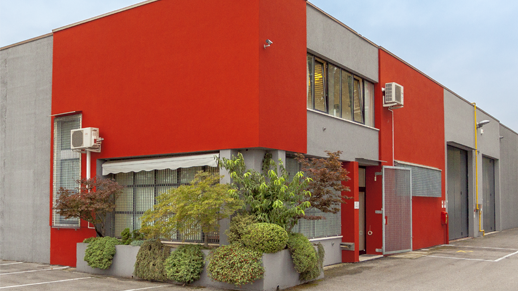ENVIRONMENT
All of our products comply with the most important European Directives (REACH and RoHS) while our suppliers guarantee a relentless monitoring of the SVHC list in order to verify, if any, the presence of substances that, though allowed, must be reported.
Restriction of Hazardous Substances, RoHS o Direttiva 2002/95/CE
In 2003, the European Union (EU) issued the Restriction of Hazardous Substances Directive, also known as RoHS Directive or 2002/95/EC Directive).
The EU has prepared this new directive in order to protect the environment and the health of those people who usually work with electrical and electronic equipment (EEE).
This regulation is predominantly targeted at eliminating the concentration of given substances from the electrical and electronic appliances that fall under the scope of application of the same directive. As a consequence, all EU Member states must guarantee that, effective on 1 July 2006, the new electrical and electronic appliances put in the market do not contain any of the six prohibited substances reported below:
-
Lead (Pb) and its compounds
-
Mercury (Hg)
-
Cadmium VI (Cd-VI) and its compounds
-
Hexavalent chrome and its compounds
-
Polybrominated biphenyl (PBB)
-
Polybrominateddiphenyl ethers (PBDE)
-
Pentha, otta, deca- BDE (Bromdiphenylether)

Restriction of Hazardous Substances, RoHS o Direttiva 2002/95/CE
In 2003, the European Union (EU) issued the Restriction of Hazardous Substances Directive, also known as RoHS Directive or 2002/95/EC Directive).
The EU has prepared this new directive in order to protect the environment and the health of those people who usually work with electrical and electronic equipment (EEE).
This regulation is predominantly targeted at eliminating the concentration of given substances from the electrical and electronic appliances that fall under the scope of application of the same directive. As a consequence, all EU Member states must guarantee that, effective on 1 July 2006, the new electrical and electronic appliances put in the market do not contain any of the six prohibited substances reported below:
-
Lead (Pb) and its compounds
-
Mercury (Hg)
-
Cadmium VI (Cd-VI) and its compounds
-
Hexavalent chrome and its compounds
-
Polybrominated biphenyl (PBB)
-
Polybrominateddiphenyl ethers (PBDE)
-
Pentha, otta, deca- BDE (Bromdiphenylether)

REACH ed SVHC LIST
REACH is the acronym of Registration, Evaluation, Authorisation and Restriction of Chemicals. The REACH Regulation has come into force on 1 June 2007 and serves the purpose of rationalising and improving the previous regulatory framework on chemical substances in the European Union (EU), and it does so through the “SVHC list”, being one of its key instruments.
REACH has also instituted the European Chemicals Agency (ECHA), playing a key role in coordinating and implementing the entire process. The ECHA is based in Helsinki (Finland) and has the mandate to manage the registration, evaluation, authorisation and restriction processes involving chemicals, for the purpose of guaranteeing EU-wide consistency.
The continuous and rapid evolution of the REACH (European Regulation concerning the registration, evaluation, authorisation and restriction of chemicals) provides for the periodical update of the Candidate List where the extremely concerning (SVHC substances) substances are listed.
Extremely concerning substances (REACH Regulation, Section 57) are made to include all substances:
-
Carcinogenic, mutagenic or toxic for reproduction (CMR), classified either in category 1 or category 2
-
Persistent, bioaccumulative or toxic (PBT) or very persistent and very bioaccumulative (vPvB) based on the criteria set out in Annex XIII of the REACH Regulation
-
For which severe effects on human health or the environment have been scientifically proven as those described above, for instance disrupting the endocrine system
It is important, then, when referring to a Safety Data Sheet (MSDS) of a product, to know that this list is available, in order to have the opportunity to verify whether such “extremely concerning” substances are indeed present in the product.

 Italiano
Italiano
